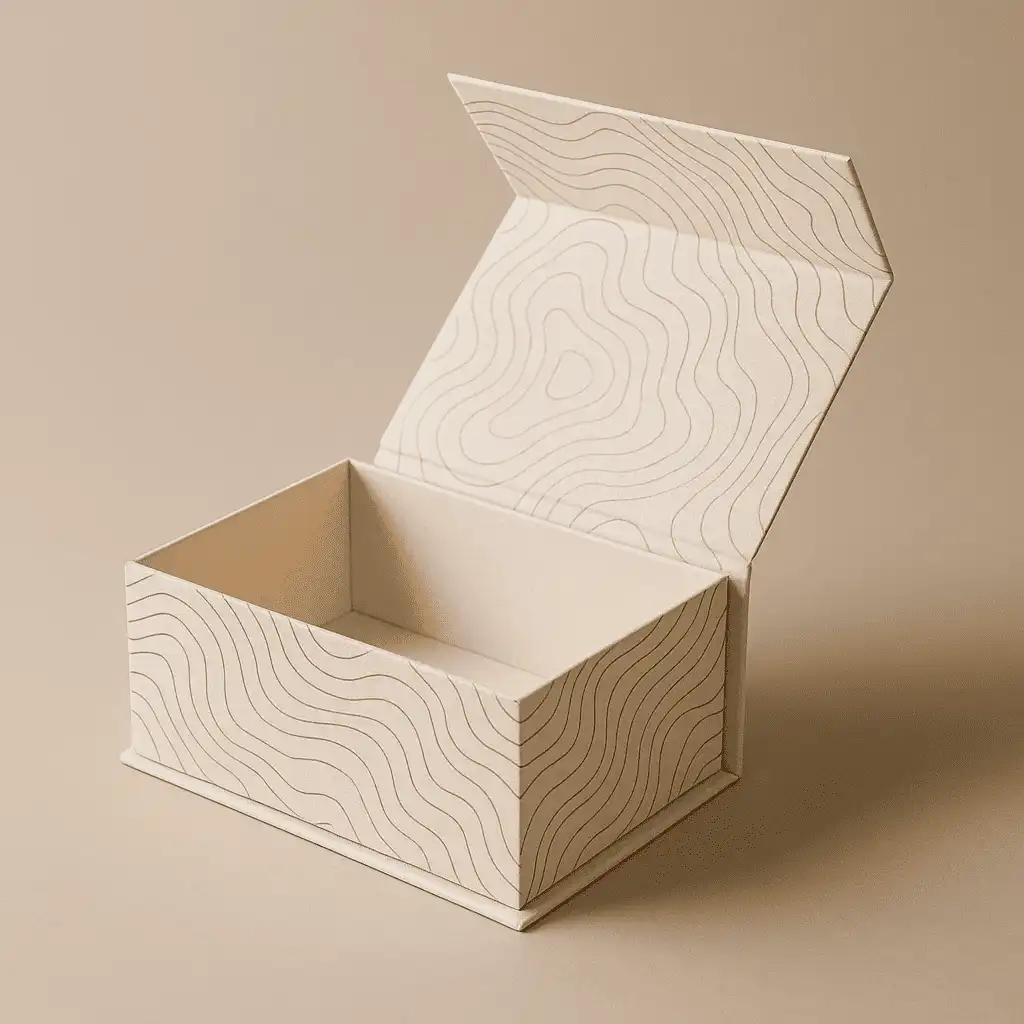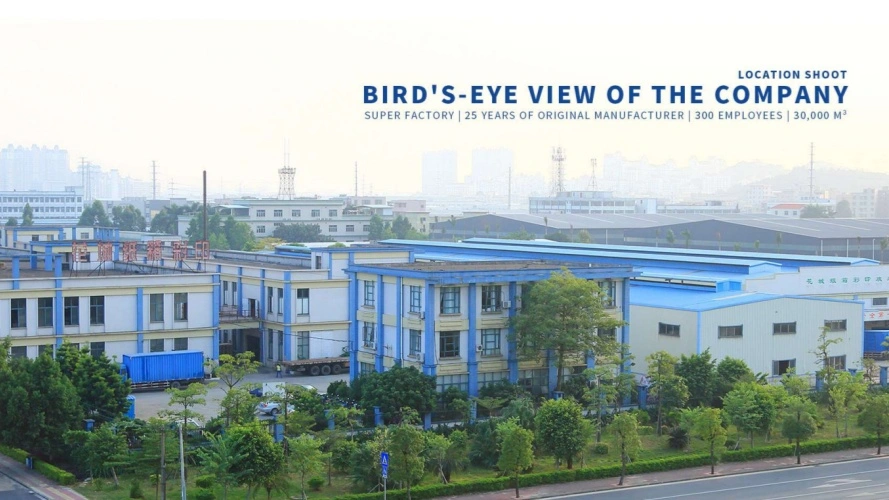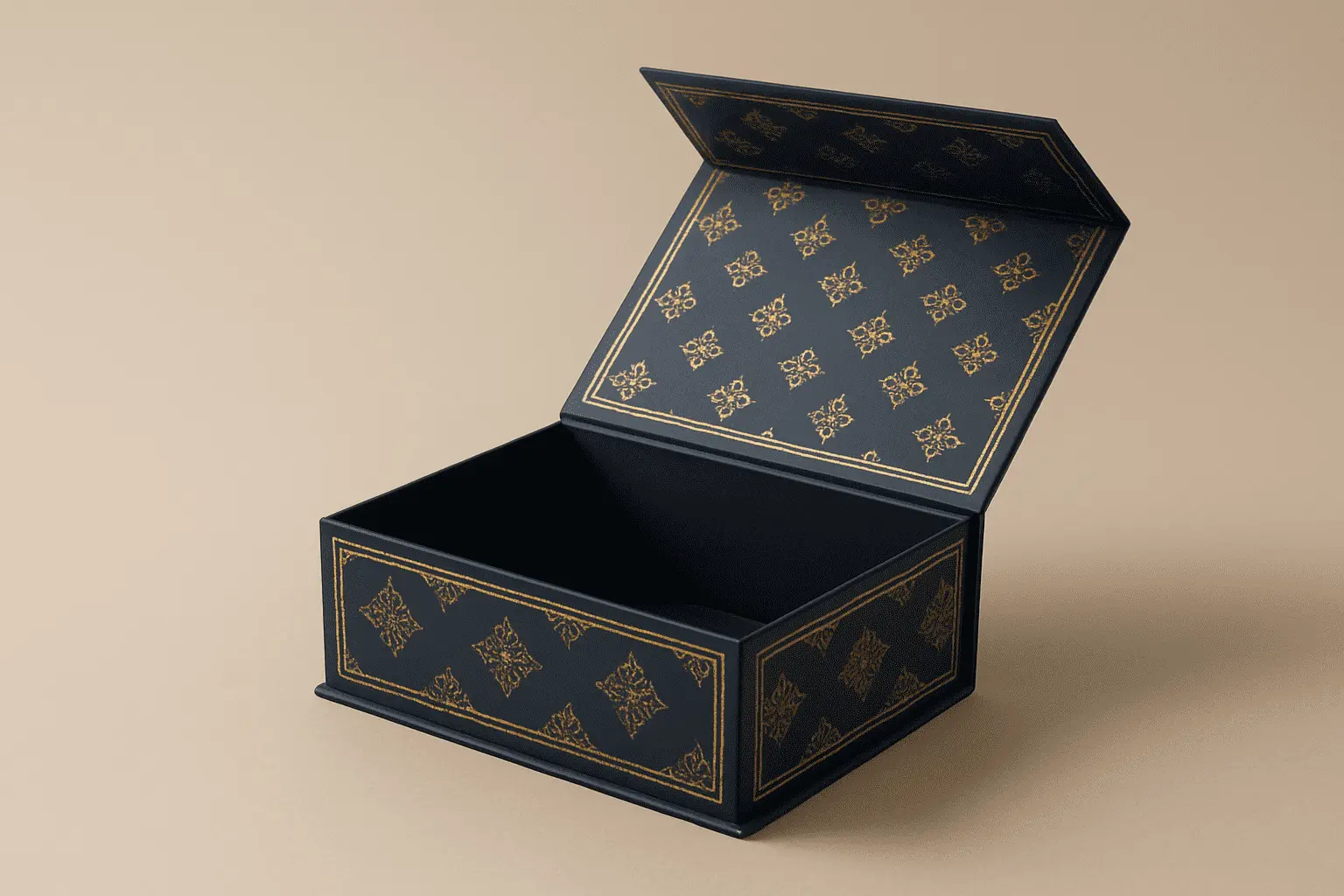Basic to Complex Paperboard Folding Carton Manufacturing
The packaging industry has witnessed remarkable evolution over the past decades, with paperboard folding carton manufacturing standing at the forefront of sustainable and versatile packaging solutions. From simple cereal boxes to sophisticated luxury packaging, the journey from basic to complex paperboard folding carton manufacturing represents a fascinating blend of traditional craftsmanship and cutting-edge technology. Modern manufacturing processes have transformed how we approach collapsible rigid boxes, enabling businesses to create packaging that not only protects products but also serves as powerful marketing tools. This comprehensive exploration delves into the intricate world of paperboard folding carton production, examining the fundamental principles, advanced techniques, and innovative approaches that define contemporary manufacturing excellence. Understanding this progression is crucial for businesses seeking to optimize their packaging strategies while maintaining cost-effectiveness and environmental responsibility.

Manufacturing Fundamentals and Material Selection
Understanding Paperboard Composition and Grades
The foundation of successful paperboard folding carton manufacturing begins with a thorough understanding of material composition and grade selection. Different paperboard grades serve specific purposes, from lightweight consumer goods packaging to heavy-duty industrial applications. Virgin paperboard offers superior strength and printability, making it ideal for premium collapsible rigid boxes that require exceptional visual appeal and structural integrity. Recycled paperboard, while more environmentally conscious, requires careful consideration of fiber quality and contamination levels to ensure consistent manufacturing results. The selection process involves analyzing factors such as basis weight, caliper thickness, moisture content, and surface smoothness, all of which directly impact the final product's performance and appearance. Manufacturing facilities must maintain strict quality control protocols when sourcing paperboard materials, as variations in raw material properties can significantly affect production efficiency and end-product quality. Modern collapsible rigid boxes manufacturing facilities employ sophisticated testing equipment to evaluate paperboard characteristics before production begins. These assessments include burst strength testing, edge crush strength evaluation, and print surface analysis to ensure optimal results throughout the manufacturing process. The integration of FSC-certified materials has become increasingly important, as environmental considerations drive consumer preferences and regulatory requirements in packaging applications.
Essential Manufacturing Equipment and Technology
Contemporary paperboard folding carton manufacturing relies heavily on advanced machinery and technology integration to achieve consistent quality and production efficiency. The evolution from manual die-cutting operations to fully automated production lines represents a significant leap in manufacturing capability. Modern facilities utilize high-speed rotary die-cutters, sophisticated folder-gluers, and precision printing equipment to produce collapsible rigid boxes with exceptional accuracy and consistency. These technological advancements enable manufacturers to handle complex designs, intricate fold patterns, and multiple finishing options while maintaining tight tolerances and quality standards. Automation plays a crucial role in modern manufacturing environments, with computerized systems controlling everything from material feeding to final quality inspection. Advanced printing capabilities, including UV printing, flexographic printing, and digital printing technologies, provide manufacturers with unprecedented flexibility in design execution and color reproduction. The integration of AI-driven quality control systems enables real-time monitoring and adjustment of production parameters, significantly reducing waste and improving overall efficiency. These technological investments allow manufacturers to offer customized packaging solutions while maintaining competitive pricing and delivery schedules for their collapsible rigid boxes production.
Quality Control and Testing Protocols
Implementing comprehensive quality control measures throughout the manufacturing process ensures consistent product quality and customer satisfaction. Modern paperboard folding carton manufacturing facilities employ multi-stage inspection protocols that begin with incoming material verification and continue through every production phase. Statistical process control methods help manufacturers identify potential issues before they impact production quality, while automated inspection systems provide real-time feedback on dimensional accuracy, print quality, and structural integrity of collapsible rigid boxes. Testing protocols encompass both physical and visual quality assessments, including compression testing, adhesive strength evaluation, and color consistency verification. Advanced testing equipment enables manufacturers to simulate real-world conditions and stress factors that packaging may encounter during transportation and storage. This comprehensive approach to quality assurance ensures that finished products meet or exceed customer specifications while maintaining the structural integrity required for effective product protection. Regular calibration of testing equipment and continuous training of quality control personnel contribute to maintaining consistently high standards throughout the manufacturing process.
Advanced Design and Engineering Techniques
Structural Engineering and Load Distribution
Advanced paperboard folding carton manufacturing requires sophisticated understanding of structural engineering principles and load distribution mechanics. Engineers must consider multiple factors when designing collapsible rigid boxes, including product weight, stacking requirements, transportation stresses, and storage conditions. The optimization of fold patterns, panel dimensions, and closure mechanisms directly impacts the structural performance and cost-effectiveness of the final packaging solution. Modern design software enables engineers to simulate various loading conditions and stress scenarios before committing to production tooling. The development of innovative fold patterns and structural configurations has revolutionized packaging design possibilities, allowing manufacturers to create increasingly complex shapes while maintaining structural integrity. Advanced collapsible rigid boxes often incorporate multiple chambers, integrated dividers, and specialized closure systems that require precise engineering calculations and manufacturing expertise. The use of finite element analysis and computer-aided design tools enables engineers to optimize material usage while maximizing structural performance, resulting in packaging solutions that provide superior protection with minimal environmental impact. Computer-aided design systems have transformed the engineering process, enabling rapid prototyping and design iteration that significantly reduces development time and costs. These sophisticated tools allow engineers to visualize complex fold patterns, test virtual prototypes under various conditions, and optimize designs before physical production begins. The integration of automated nesting algorithms maximizes material utilization efficiency, reducing waste and improving cost-effectiveness of collapsible rigid boxes manufacturing operations.
Printing and Surface Enhancement Technologies
Modern paperboard folding carton manufacturing incorporates advanced printing and surface enhancement technologies that transform basic packaging into powerful marketing tools. Multi-color printing capabilities, combined with specialized finishing techniques, enable manufacturers to create visually stunning collapsible rigid boxes that capture consumer attention and reinforce brand identity. The integration of UV printing technology provides exceptional color vibrancy and durability while enabling special effects such as spot UV coating and textured finishes. Surface enhancement techniques including embossing, debossing, foil stamping, and lamination add premium appeal to packaging designs while providing functional benefits such as moisture resistance and scratch protection. These advanced finishing options require specialized equipment and expertise, but they enable manufacturers to differentiate their collapsible rigid boxes in competitive markets. The combination of digital printing capabilities with traditional finishing techniques provides unprecedented flexibility in design execution and customization options. Color management systems ensure consistent color reproduction across production runs, maintaining brand integrity and customer satisfaction. Advanced spectrophotometer systems and G7 color management protocols provide precise color matching and quality control throughout the manufacturing process. This attention to color consistency is particularly important for collapsible rigid boxes used in retail environments where visual appeal directly impacts purchasing decisions and brand perception.
Customization and Rapid Prototyping
The ability to provide customized packaging solutions has become a critical competitive advantage in modern paperboard folding carton manufacturing. Advanced prototyping capabilities enable manufacturers to quickly develop and test new designs, significantly reducing time-to-market for new products and packaging concepts. Digital cutting systems and 3D modeling software facilitate rapid prototype development, allowing customers to evaluate design concepts before committing to production tooling and minimum order quantities. Customization extends beyond basic dimensional modifications to include specialized features such as integrated handles, dispensing mechanisms, and product-specific inserts. Modern collapsible rigid boxes can incorporate complex functionality while maintaining cost-effectiveness through efficient design and manufacturing optimization. The use of modular design principles enables manufacturers to offer extensive customization options while leveraging standardized components and production processes. Rapid prototyping capabilities include both physical samples and virtual reality visualization systems that allow customers to experience packaging designs before production begins. This comprehensive approach to prototype development reduces design iteration cycles and ensures customer satisfaction with final products. The integration of customer feedback throughout the design process results in collapsible rigid boxes that exceed expectations while meeting specific functional requirements and aesthetic preferences.
Sustainable Manufacturing and Future Innovations
Environmental Responsibility and Green Manufacturing
Contemporary paperboard folding carton manufacturing places significant emphasis on environmental responsibility and sustainable production practices. The adoption of FSC-certified materials ensures responsible forest management while providing consumers with environmentally conscious packaging options. Manufacturing facilities are increasingly implementing closed-loop water systems, energy-efficient equipment, and waste reduction programs that minimize environmental impact while maintaining production efficiency. These sustainable practices are becoming essential requirements rather than optional considerations in modern collapsible rigid boxes manufacturing. Renewable energy integration and carbon footprint reduction initiatives are transforming manufacturing operations across the industry. Solar panel installations, energy-efficient lighting systems, and optimized production scheduling contribute to significant reductions in energy consumption and greenhouse gas emissions. The development of bio-based adhesives and inks further reduces environmental impact while maintaining product performance standards. These environmental initiatives often result in cost savings through reduced energy consumption and waste disposal costs. Recycling programs and circular economy principles are being integrated into manufacturing operations, with facilities designing products for end-of-life recyclability and implementing take-back programs for used packaging materials. The development of collapsible rigid boxes using recycled content without compromising performance represents a significant advancement in sustainable packaging solutions. Life cycle assessment tools enable manufacturers to quantify environmental benefits and communicate sustainability advantages to environmentally conscious customers.
Automation and Industry 4.0 Integration
The integration of Industry 4.0 technologies is revolutionizing paperboard folding carton manufacturing through increased automation, data analytics, and predictive maintenance capabilities. Smart manufacturing systems enable real-time monitoring of production parameters, automatic adjustment of process variables, and predictive maintenance scheduling that minimizes downtime and maximizes efficiency. These advanced systems generate vast amounts of data that can be analyzed to identify optimization opportunities and improve overall operational performance in collapsible rigid boxes production. Artificial intelligence and machine learning algorithms are being deployed to optimize production scheduling, predict quality issues, and automate complex decision-making processes. These technologies enable manufacturers to respond quickly to changing customer requirements while maintaining consistent quality standards and delivery performance. The integration of robotics and automated material handling systems reduces labor requirements while improving workplace safety and production consistency. Internet of Things (IoT) sensors and connected equipment provide unprecedented visibility into manufacturing operations, enabling proactive maintenance and optimization strategies. Real-time data collection and analysis capabilities support continuous improvement initiatives and enable manufacturers to offer enhanced service levels to customers. The implementation of digital twin technology allows manufacturers to simulate and optimize production processes before implementing changes, reducing risk and improving outcomes for collapsible rigid boxes manufacturing operations.
Emerging Technologies and Future Trends
The future of paperboard folding carton manufacturing will be shaped by emerging technologies and evolving customer expectations. Nanotechnology applications are enabling the development of enhanced barrier properties, antimicrobial coatings, and smart packaging features that provide additional functionality beyond traditional protection and presentation capabilities. These advanced materials and coatings will enable collapsible rigid boxes to incorporate sensors, indicators, and interactive elements that enhance user experience and product safety. Digital printing technology continues to evolve, with improvements in speed, quality, and substrate compatibility enabling new applications and business models. Variable data printing capabilities allow for mass customization and personalization options that were previously impractical or cost-prohibitive. The integration of augmented reality and QR code technologies enables packaging to serve as interactive media platforms that engage consumers and provide additional value beyond product protection. Biodegradable and compostable materials are being developed to address growing environmental concerns while maintaining the performance characteristics required for effective packaging applications. These innovative materials will enable the production of collapsible rigid boxes that completely eliminate end-of-life disposal concerns while providing superior protection and visual appeal. The convergence of sustainability requirements, technological capabilities, and consumer preferences will continue to drive innovation in paperboard folding carton manufacturing for decades to come.
Conclusion
The evolution from basic to complex paperboard folding carton manufacturing represents a remarkable journey of technological advancement, environmental responsibility, and customer-focused innovation. Modern manufacturing facilities combine traditional craftsmanship with cutting-edge technology to produce collapsible rigid boxes that exceed customer expectations while meeting stringent environmental standards. The integration of advanced design software, automated production systems, and sustainable materials has transformed the industry's capabilities and market positioning. As consumer preferences continue to evolve toward environmentally conscious and functionally superior packaging solutions, manufacturers must continue investing in technology, training, and sustainable practices to remain competitive in this dynamic market.
Ready to Transform Your Packaging Solutions?
With over 20 years of original manufacturing experience, our team of 300+ skilled employees operates from a state-of-the-art 35,000 m² facility, serving over 1,000 loyal customers worldwide. At Guangzhou Huadu Fetching Color Printing and Packaging Co., Ltd., we combine decades of expertise with cutting-edge technology to deliver exceptional collapsible rigid boxes and comprehensive packaging solutions.
Our advanced capabilities include KBA106-(9+1) UV printing, Heidelberg XL162-6L printing systems, 2.5-layer corrugated board production lines, and AI-powered gift box manufacturing. With ISO14001-2015, ISO9001-2015, FSC, and Disney certifications, we maintain the highest standards of quality and environmental responsibility.
From concept to delivery, our experienced R&D team of packaging engineers provides comprehensive support including new material applications, structural development, artwork design, and process optimization. Whether you need folding gift boxes, display racks, mailer boxes, or custom corrugated solutions, we deliver excellence with every project.
Contact us today to discuss your packaging requirements and discover how our expertise can enhance your brand's success:
Email: public@fetchingprinting.com
References
1. Johnson, M.K., & Anderson, P.R. (2023). "Advanced Paperboard Manufacturing: Structural Engineering Principles in Modern Packaging Design." Journal of Packaging Technology and Research, 15(3), 127-145.
2. Chen, L.W., Thompson, S.J., & Rodriguez, C.A. (2022). "Sustainable Manufacturing Practices in Corrugated Packaging Industry: Environmental Impact Assessment and Optimization Strategies." International Journal of Sustainable Manufacturing, 8(2), 89-112.
3. Williams, D.B., Kumar, R.S., & O'Brien, K.M. (2023). "Industry 4.0 Integration in Paperboard Folding Carton Manufacturing: Automation Technologies and Quality Control Systems." Manufacturing Engineering Quarterly, 29(4), 203-221.
4. Martinez, E.F., Zhang, H.Y., & Peterson, A.L. (2022). "Innovation in Paperboard Surface Enhancement: Advanced Printing Technologies and Finishing Techniques for Premium Packaging Applications." Packaging Science and Technology Review, 18(1), 45-68.

Based on your location and order quantity, you will have the opportunity to receive a limited time free shipping promotion!

Corporate Purpose
